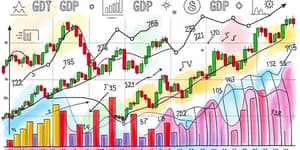
Trading is often portrayed as a battle of wits against the markets, yet the real struggle takes place inside the mind of each trader. While technical indicators and fundamental analysis draw most attention, the unseen force of psychology can make or break success. In this deep dive, we explore how to harness the power of mental discipline and emotional regulation to thrive in dynamic financial markets.
Understanding how emotions and biases influence every decision can transform your approach from reactive to proactive. By mastering your internal landscape, you pave the way for more consistent and confident trading.
At its core, trading psychology involves the study and understanding of internal drivers that shape behavior. These include fear, greed, overconfidence, and the myriad cognitive distortions that accompany them. Behavioral finance has shown that market participants are rarely perfectly rational; instead, they are swayed by emotional tides.
Market movements themselves can trigger emotional spikes, leading to impulsive choices that diverge from well-laid plans. Recognizing this interplay is the first step toward cultivating a resilient mindset.
Elite traders share certain characteristics that set them apart. Developing these traits requires intentional practice and ongoing self-assessment.
Emphasizing these traits helps build a foundation where technical skills can truly shine without being undermined by emotional volatility.
Emotional reactions often masquerade as rational decisions. Identifying common patterns can free you from their control.
In addition to these drivers, traders must guard against cognitive biases such as:
Uncovering these hidden influences empowers you to make decisions based on logic rather than impulse.
Adopting systematic approaches can neutralize emotional pitfalls. Here are proven methods to reinforce mental toughness:
Each technique aims to shift focus away from singular results toward the integrity of your overall process.
Mindset guru Carol Dweck’s research on growth versus fixed mindsets provides valuable insights for traders. A fixed mindset views ability as innate and immutable, while a growth mindset believes in ongoing development through effort.
Adopting a growth mindset encourages you to:
By seeing yourself as a student of the market rather than a victim of its whims, setbacks become stepping stones rather than insurmountable barriers.
Forging a connection between mental discipline and technical analysis is essential. No strategy can thrive in an environment of unchecked emotion. To integrate mindset work with trading tactics:
1. Construct a detailed trading plan outlining entry and exit criteria.
2. Use a risk management framework that aligns with your emotional tolerance.
3. Schedule regular reviews to adjust your strategy and reflect on psychological patterns.
A disciplined framework helps ensure that market data, rather than fleeting feelings, dictates your actions.
Mastering trading psychology is a continuous journey. It demands regular self-reflection, adaptability, and unwavering commitment to a process-driven approach. By understanding discipline and emotional control, recognizing biases, and applying structured techniques, you equip yourself to navigate market volatility with clarity.
Remember, the markets will always present challenges. It is your mindset that determines whether you perceive those challenges as threats or as catalysts for growth. Commit to mastering your mind, and the path to sustainable trading success will follow.
References













